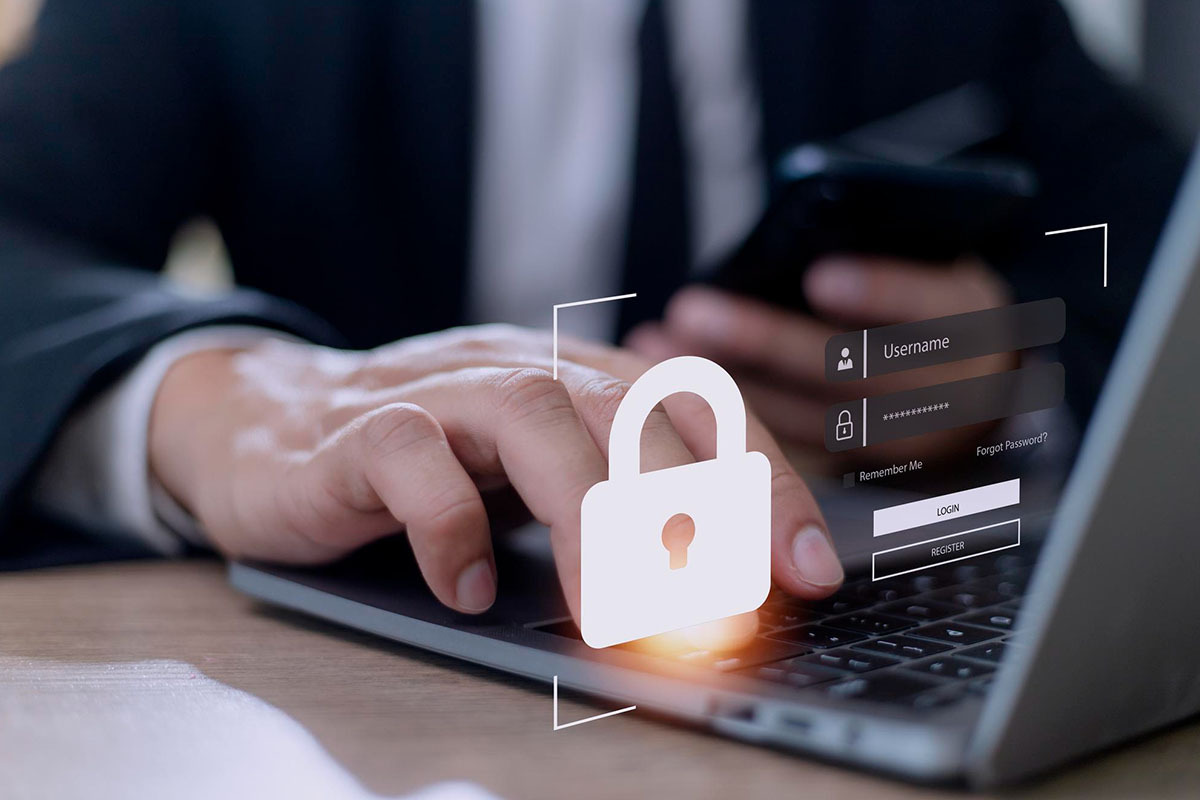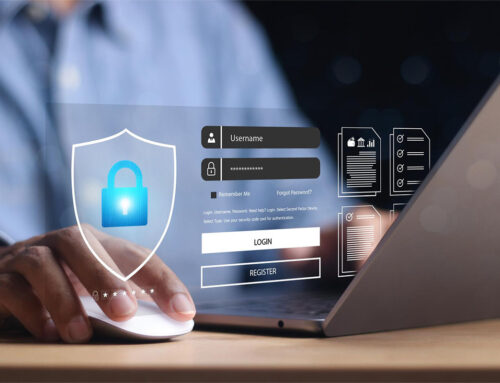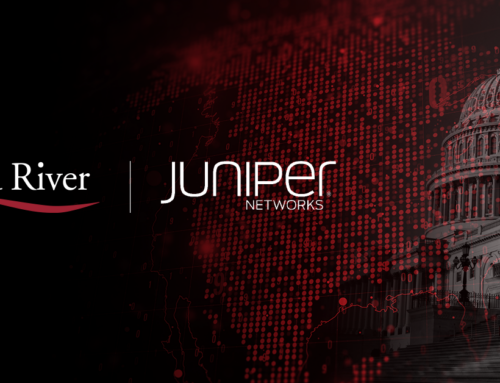
How Identity and Access Management Transforms Cloud Security
More than 95 percent of all businesses now utilize at least one cloud platform to operate. As the extinction of on-premises networks draws near, organizations must align their cybersecurity posture with cloud-based systems. The initial data defenses used by companies transitioning away from physical drives no longer deliver the determined cybersecurity needed to keep hackers and infostealers at bay. Fortunately, the identity and access management (IAM) approach transforms cloud security to effectively address today’s threats.
While IAM tools help harden the attack surface of cloud-based networks in wide-reaching sectors, the high-stakes chess game being played out between hackers and cybersecurity professionals continues. The development of IAM appears to have largely stymied the efforts of online criminals, at least for the moment. Business professionals, determined to prevent a debilitating data breach, have an opportunity to take proactive measures right now. Integrating IAM solutions with zero trust architecture reinforces a security posture to such an extent that hackers would be better off playing the lottery than attempting a cyberattack.
Origins of IAM Solutions
Although IAM tools are the latest technological defense against growing online threat actors, the concept has its roots in ancient times. Some credit early Egyptian, Greek and Chinese civilizations with developing analog identity management systems. During the Han Dynasty, for example, passphrases were reportedly used to authenticate the identities of bureaucrats and other officials. The Romans used a variety of clay seals to prove identity, authenticity and authorize access to restricted resources.
The rise of digital enterprises and the World Wide Web prompted researchers at the Massachusetts Institute of Technology to develop the fledgling IAM-oriented Compatible Time-Sharing System. Once public cloud services took off during the aughts of the 21st century, IAM tools quickly emerged as a necessity.
Why is Cloud IAM Necessary?
The migration of on-premises networks to the cloud has reportedly triggered a seismic economic shift. The cloud computing market share is expected to grow from $480 billion in 2022 to $760 billion by the end of 2025. Over the next five years, a near-total adoption of the cloud will likely send the market over $1.6 trillion. Hackers know precisely where the sensitive and valuable digital assets are located, and they will stop at nothing to steal them.
While honest and hardworking industry leaders reap the efficiency and cost savings associated with utilizing the cloud, cybercriminals have also adapted nefarious theft schemes. Pivoting away from in-house networks quickly rendered traditional approaches to data security inadequate. Items such as firewalls, virtual private networks (VPNs) and anti-virus software still have a place in data security. However, IAM tools are essential to maintaining robust digital security in cloud-based operations.
How Do IAM Solutions Work?
When companies relied on in-house networks, they saw data security through a traditional lens. The valuables were sheltered in a physical, central location and thieves needed to orchestrate a digital burglary. Much like the defense of a medieval castle, appropriate perimeter defenses were crafted. Firewalls, anti-virus software and other perimeter defenses were, effectively, the digitized version of moats, castle walls and drawbridges.
The IAM tools that are being deployed by experienced cybersecurity professionals realign protections with non-central digital storage and transmissions. These are fundamental components of a proactive identity and access management strategy.
Authentication
It’s important to understand that IAM solutions are not necessarily designed to form a perimeter defense. Instead, the concept harkens back to the ancient Romans, Egyptians, Greeks and Chinese who relied upon identity authentication. In our digital age, login credentials emulate the Romans’ clay seals. Businesses assign usernames and task team members with creating a strong password. There was a time when these identity authentication elements sufficed. Unfortunately, that ship has sailed. Adding the following layers of IAM tools is critical to deter intruders.
- Multi-Factor Authentication (MFA): The simplest approach to multi-factor authentication — two-factor authentication — still yields dividends. A legitimate user enters their username, password and a secondary code, which is usually transmitted via email or text message. After entering the confidential, one-time code, authentication is complete. This effective authentication strategy has evolved to include multiple codes, biometrics and other security measures.
- Single Sign-On (SSO): This safeguard enables stakeholders to use a single set of login credentials to access multiple systems. Rather than spend time repeatedly entering a username and password, followed by an MFA code, an Identity Provider shares the initial authentication with service providers. Using the SSO methods sidesteps the downtime associated with remembering different passwords and waiting for MFA codes.
- Endpoint Authentication: Cybercriminals go to great lengths to breach cloud-based networks. By adding IAM tools to distinguish between approved laptops, desktops, smartphones, tablets and potentially compromised devices, only secure and approved endpoints pass muster. It’s not uncommon for a legitimate user to sign on with a less-than-secure electronic device. By allowing only the use of fully vetted products, hackers will not be given access.
Access Authorization

Following the authentication process, authorized personnel work with a login profile that possesses predetermined limitations. Business leaders define which areas of the network a group or individual typically needs to perform goal-achieving duties. Based on the concept of privileged access, staff members are not normally allowed to view sensitive and valuable information outside their core responsibilities.
When occasions arise that call for greater access, the user files a request. Supervisors and/or security officials process the submission in real time. This type of role-based access mitigates the damage and losses a hacker could inflict if the criminal were to gain unfettered access. Even if an advanced persistent threat manages to overcome the IAM tools in place, the login profile limits the hacker’s ability to steal the most significant digital assets.
Lifecycle Management
Not having a protocol in place to track and handle user profiles has proven the Achilles’ heel of more than one organization. Companies generally have a professional available to establish the initial credentials. When employing a role-based system, appropriate access authorizations and security measures are implemented. The problem appears to be when interns, third-party vendors and staff members are no longer working with a corporation. Old login profiles linger, sometimes falling into the hands of bad actors.
Auditing and Reporting
Conversations regarding IAM solutions sometimes omit the fact that they provide diligent monitoring metrics. The cybersecurity system enables an operation to track and analyze activities in real time. Documenting the who, what, where, why and how IAM tools help identify vulnerabilities that could result in a data breach. Having hard facts to address cybersecurity weaknesses allows companies to shore them up, maintain regulatory compliance and provide prompt reporting.
Coupling IAM Tools with Zero Trust Architecture
Identity management and access security measures supply an exceptional forward-facing defense against unauthorized users. The access authorization driven by the zero trust component addresses a different aspect. The data security thinking behind privileged access to valuable and confidential information assumes that an insider threat may exist at some juncture or a breach could occur.
These are reasonable assumptions, given reports that nearly 60 percent of businesses are hit by at least one ransomware attack annually, 83 percent experience an insider attack, and malware incidents have increased by 8 percent year-over-year. That’s why a growing number of organizations are coupling IAM solutions with zero-trust cybersecurity architecture.
How Does Zero Trust Data Security Work?
A natural fit to pair with IAM solutions, zero trust cybersecurity operates under the idea that no user can be allowed access to digital assets unless absolutely necessary. That may sound like an almost unreasonable level of mistrust. However, the underlying thinking is that a hacker or insider threat could gain control of a legitimate login profile.
Although zero trust architecture is built to adapt to the nuanced differences between industries and unique enterprises, it has something in common with IAM. It implements a cybersecurity posture that requires strict login verifications and places hard limits on network access. These rank among the core zero trust components.
- Least Privilege Access: Users can only view and leverage data and programs necessary to complete tasks. Requests must be submitted and approved to exceed hard limits.
- Micro-Segmentation: The organization’s network is divided into select areas that are compartmentalized and isolated from others. Even if one data zone is compromised, hackers cannot necessarily steal data from another.
- Ongoing Authorization: The zero trust model doesn’t rest after someone has been granted access. It continuously re-evaluates user profiles and approved digital asset usage.
- Real-Time Monitoring: The zero trust approach supports ongoing monitoring. It helps track subtly unusual activities and attempts to exceed predetermined limits.
The preset authorization and lifecycle identity management benefits IAM delivers are only heightened by zero trust methods and architecture. By bringing them together, industry leaders gain the robust cybersecurity necessary to deter, detect and respond to emerging threats in real time.
Benefits of IAM and Zero Trust
Meshing identity and access management with zero-trust security creates a cybersecurity policy in which the whole is greater than the sum of its parts. Together, the two approaches to data security complement each other, augmenting some areas and eliminating vulnerabilities in others. Business leaders who worry about insider threats, unapproved endpoint usage or employees not keeping passwords and usernames safe can implement a cybersecurity posture that delivers the following benefits.
- Reduced Attack Surface: The integration of IAM and zero trust closes security gaps that leave networks susceptible to infiltration. Multi-factor authentication alone serves as a deterrent that frustrates hackers.
- Defends Against Credential Stuffing: Slick phishing schemes still dupe staff members into divulging login information. Identity authentication protocols render credential stuffing success nearly impossible. Even if a hacker spends an enormous amount of time, energy and resources to overcome MFA or biometrics, zero trust prevents access to critical data.
- Insider Threat Mitigation: Together, zero trust and IAM have the bandwidth to monitor seemingly minor anomalies. When a user strays from normal activities, alerts are triggered. Ongoing monitoring gives security professionals advanced warning that an intruder or corporate spy may be up to no good.
- Centralized Control: Designed to authenticate, authorize, monitor and manage the lifecycle of user profiles, IAM tools offer centralized oversight. Organizations enjoy efficient and cost-effective single-point identity management. Adding zero trust takes control a step further by enforcing company polices concerning the viewing and utilization of highly sensitive information.
By employing identity access management with zero trust, organizations take a giant step forward in terms of meeting data privacy and security regulations. These include the Health Insurance Portability and Accountability Act (HIPAA), the California Consumer Privacy Act, the EU’s General Data Protection Regulation, the Federal Information Security Management Act and the Cybersecurity Maturity Model Certification (CMMC) mandated by the U.S. Department of Defense. In fact, the federal government recognizes IAM as a foundational cybersecurity element that is further enhanced by integrating zero trust architecture.
Contact Red River to Transform Your Cloud Security
At Red River, we understand the importance of protecting digital assets in the cloud. That’s why we collaborate with companies to deliver effective, scalable managed IT and cybersecurity consulting services. Identity access management, coupled with zero trust architecture, hardens an organization’s attack surface in ways that single cybersecurity approaches cannot. If enhancing your cloud security posture with IAM and zero trust measures interests you, contact us today by calling or completing our online form. Let’s get the process started!

written by
Corrin Jones
Corrin Jones is the Director of Digital Demand Generation. With over ten years of experience, she specializes in creating content and executing campaigns to drive growth and revenue. Connect with Corrin on LinkedIn.




